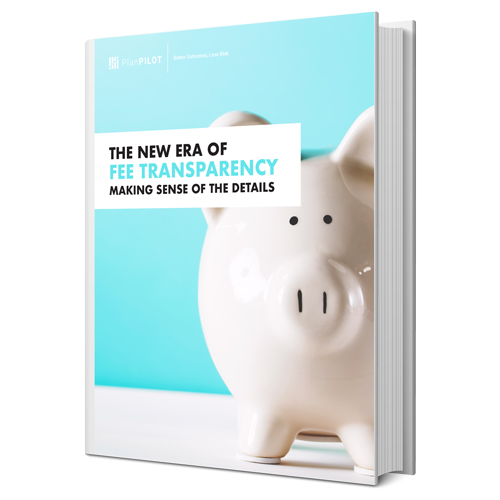The retirement planning space is competitive. 401(k) and 403(b) plan providers are under more pressure than ever to make sure that their services are competitive, both in terms of cost and performance. Still, the rising number of plan participant lawsuits filed against sponsors in recent years demonstrates that there remains significant leeway for less than competitive practices if sponsors aren’t vigilant. A vital component of this awareness is regular benchmarking of plan performance and fees against industry averages. This kind of cross-referencing is the responsibility of plan sponsors and can come with significant risks and opportunities. Below is a look at the factors that make sound benchmarking practices so crucial.
Benchmarking is a Fiduciary’s Legal Obligation
The Employee Retirement Income Security Act (ERISA) mandates that 401(k) and 403(b) plan sponsors meet certain basic standards in terms of ensuring that participants’ assets are managed responsibly. Among these minimum requirements is an obligation to ensure that plans are performing adequately and that expense ratios are reasonable. A failure to appropriately monitor plan performance can result in sponsors being hit with an excessive-fee lawsuit from participants. The best way to fulfill these fiduciary duties is to compare existing plans to those of similar sizes across the industry on a regular basis. Benchmarking in this way reduces the possibility of providers taking advantage of a sponsor’s neglect in oversight that could be harmful to participants.
Benefits of Benchmarking for Plan Participants
In addition to maintaining ERISA compliance, regular 401(k) and 403(b) benchmarking comes with a number of positive consequences. For participants, these often come in the form of reduced fees. By submitting requests for proposals every few years, at a minimum, plan sponsors gain leverage that can be applied on behalf of participants in discussions with providers.
Even if sponsors aren’t out to make a change, knowing what options exist and industry trends can be powerful. If a current plan provider is charging substantially more than the average of the proposals received, that information is a negotiating chip. Simply having context on what’s available can be enough to convince plan service providers to renegotiate. A decrease in asset management fees of only a few basis points can mean huge gains in account balances at retirement.
Regular Benchmarking Can Help Plan Sponsors Execute On Long-term Goals
A solid 401(k) or 403(b) plan is an important vehicle for carrying participants comfortably into retirement. It should also, however, act as an important recruitment and retention tool for plan sponsors. Benchmarking can provide access to a wealth of data beyond just fee statistics. Information like overall plan growth relative-to-market, average account balances and average income replacement ratios at retirement can be invaluable for plan providers looking to maximize the value derived from their offerings.
If a plan’s investment option has a track record over a significant time period – say, five years or longer – of market underperformance, that’s a red flag. A manager search or switch to passive management or indexing could be the right move.
As for average account balances, this data can provide a good look at engagement and contribution rates. It also could factor into fee negotiations with providers, as programs with higher average account balances tend to be priced more competitively.
Finally, estimates on income replacement ratios can be an important gauge of how well participants are being served overall. If these estimates are low, some part of the equation isn’t satisfactory, and a change is needed. While each case is different, plan benchmarking gives plan sponsors key information in making their retirement benefits as competitive as possible. If your benchmarking does turn up unsavory results and your provider is uncooperative, it may be time to consider a switch.
Benchmarking plays a vital role in making retirement planning work for all parties. Having a finger on the pulse of industry trends is more than just legally responsible for sponsors. It’s also financially prudent. Ensuring that providers are at least in-line with industry averages for similar account profiles can go a long way toward optimizing the recruitment value of a 401(k) or 403(b) offering and maintaining the goodwill of current participants.
Role of a Consultant
Benchmarking retirement plans can, unfortunately, be challenging. Determining the frequency, scope and specific metrics of these checkups is both complex and important to get right. Negotiating changes in services and fees with providers requires knowledge and an expertise. If there’s concern that your organization isn’t doing enough to stay on top of industry standards, call us today at (312) 973-4911 or email info@planpilot.com and see how PlanPILOT can help.
|
The New Era of Fee Transparency An important fiduciary responsibility is to understand the services being provided and ensure that the fees being charged to the plan are reasonable. |
Related Posts
 Why Plan Sponsors Should Hire a Retirement Plan Consultant - Learn why plan sponsors choose to work with a retirement plan consultant, as well as a few of the questions you'll want to ask if… ...Read More
Why Plan Sponsors Should Hire a Retirement Plan Consultant - Learn why plan sponsors choose to work with a retirement plan consultant, as well as a few of the questions you'll want to ask if… ...Read More What Plan Sponsors Should Know About the Plan Document - Why is the retirement plan document so important, and what elements should be included in your organization's plan document? ...Read More
What Plan Sponsors Should Know About the Plan Document - Why is the retirement plan document so important, and what elements should be included in your organization's plan document? ...Read More Evaluating Your Plan’s Recordkeeper - Learn more about the role a plan recordkeeper plays and some of the factors plan sponsors should consider when choosing and evaluating a recordkeeper. ...Read More
Evaluating Your Plan’s Recordkeeper - Learn more about the role a plan recordkeeper plays and some of the factors plan sponsors should consider when choosing and evaluating a recordkeeper. ...Read More

